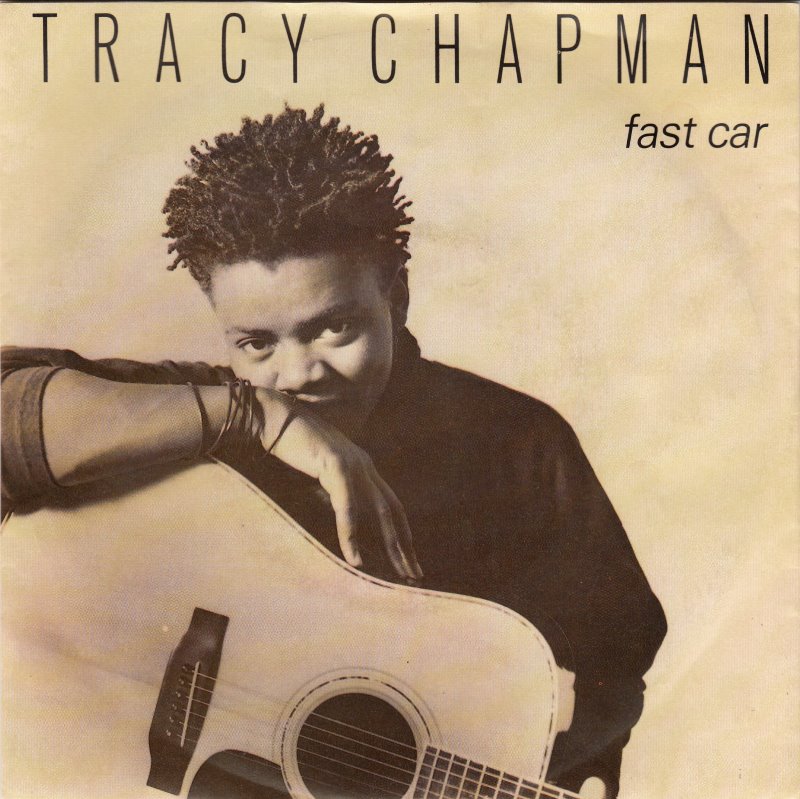Tracy Chapman’s “Fast Car” has become embraced as a timeless song. Maybe less to simply great songwriting, but more to the fact it narrates an enduring attribute of American life: trying to attain social mobility. Received by Gen X, carried by Millennials and now heralded by Gen Z, the lyrics of “Fast Car” have become a cross-generational narrative. Despite existing across multiple decades and chapters of American history, the song still illustrates an unchanging reality across generations.
When Chapman appeared at the 2024 Grammy to perform her song, it was abundantly clear of the song’s importance in music history. Luke Combs’ 2023 cover of “Fast Car” revived the song and may have introduced it to younger audiences. Combs’ cover peaked at no. 2 on the Billboard Hot 100, staying in the top 10 of the chart for most of 2023.
Tracy Chapman became the first Black songwriter to win Song of the Year at the Country Music Awards. In the midst of “Fast Car” returning to prominence, the song finds itself again at heightened economic tensions in the U.S. Higher grocery costs are leaving some to turn to food stamps and food donation centers, high rent costs rent and stagnant wages with rising living costs are all factors making it difficult for people to live.
When “Fast Car” was released in 1988, the country was reaching the end of the Reagan era. There was a growth of economic inequality, less economic opportunities or economic development in cities and “white flight” into the suburbs. The Reagan era was also when negative images and stereotypes around welfare began to populate. Villainizing and racializing the “welfare queens” was one tactic utilized to defund the welfare state, which is what was happening under the Reagan administration.
Jesse Rhodes, a political science professor at the University of Massachusetts Amherst, finds that “Fast Car” critiqued the Reagan era’s negative imagery of those in poverty. “It is an enduring honest portrayal of the challenges of escaping poverty [and] the intergenerational transmission of poverty,” Rhodes said.
Tracy Chapman sought to capture the people being pushed into the margins as the U.S. built a new economic and social era. Rhodes finds that Chapman’s empathetic approach to the lyrics aids in the song’s narrative. “[‘Fast Car’] is humanizing, dignifying and avoids simple blaming by highlighting conditions beyond people’s control. It’s realistic in simple language [in how] conditions trap [people] in circumstances, even as they try to escape them,” he said.
“Fast Car” begins with a short instrumental break before any singing begins. Though there are different perspectives on the song’s note breakdown, it is accepted that the verses follow a C major 7th, G major, E minor and D major pattern. This pattern is consistent throughout the song’s five verses. The chorus is where the notes begin to change. The G and D majors are dropped and the C major 7th becomes a regular C major. The new pattern is the E minor and C major only for the first four lines of the chorus, before picking back up the D major and becoming C major, E minor and D major for the rest of the chorus.
The changing composition between chorus and verse signifies the turns being made. There isn’t a bridge, which is where major shifts would happen in a song. Utilizing the chorus as the tonal shift of the song breaks the songwriting expectation. This allows Chapman to create a type of sonic symbolism between the production and the song’s metaphor. The changing atmosphere of the verses validates that a physical and metaphorical car has been used to get the song’s subjects, a couple, to new environments. But the chorus is the only place where the lyrics reflect the movement of a car. This lyrical and sonic uniqueness to “Fast Car” exemplifies how the chorus functions as the symbolic turns that the car is taking through the song.
Another notable aspect of the chorus is the changing verb tense. The chorus is written in past tense while the verses are in present tense despite changes in time. We are moving in and out of time with the narrator. These movements play into the cycles of time and life cycles of socioeconomic status in “Fast Car.”
Chapman illustrates the cycles of navigating social mobility in “Fast Car.” The song follows an unnamed female narrator seeking to escape her living situation. Throughout the song, she seems to speak to a partner who has a “fast car” that can lead them both to a better life. “I want a ticket to anywhere” and “Starting from zero, got nothing to lose / Maybe we’ll make something” are the starting lyrics which depict the narrator’s aspirations for a new environment. It’s important to note that the narrator does not show shame in where they are coming from. They simply believe that there must be something greater than the life they’ve been given.
The fast car could be the literal car getting them out of the town that holds no prospects or being the symbolic point of access that allows people to social climb. For some, that may be education or making the right connections. In Chapman’s case, getting a scholarship to attend a private boarding school, which led to her attending Tufts University, was her access point. In “Fast Car,” the car becomes the proposed access point to something better. The narrator explains how needing to take care of her alcoholic father is why she was unable to pursue an education. She begins working at the local convenience store to support her father and herself. But realizations that her life will stay the same without intervention leads to the conversation with her partner. This begins the narrator’s journey to escape the cycle of poverty that has entrapped her family.
Eventually, by the fourth verse of the song, the couple have left town but face new economic challenges. The narrator has gotten a job as a checkout clerk, but her partner cannot find work. They’ve taken the steps to better their lives but limited work skills and education prevents them from getting the jobs necessary to have a stable life. They don’t have enough money to house themselves and live at a shelter. Despite this, the narrator expresses hope that her conditions will improve, marking the next part of the song’s cycle. The narrator has been able to escape her initial conditions but an inability to gain access to housing and a low-wage job prevents her from building a new life.
This is where Tracy Chapman asserts how people work towards improving their lives, but social conditions beyond their control complicate that mobility. It illustrates that social mobility is not constructed to simply reward hard work. Instead, there are class dynamics present that prevent people from attaining the life they are seeking.
The song’s final verse ends with the narrator’s realization that although she has left her town, she somehow is still in the same economic situation she tried to escape. She has found a job that pays the bills, but only the bills. There’s no indication that the narrator has a job that allows her to enjoy her life or build some capital. Her income is enough to support her family and keep them alive. Her partner now resembles her father through their drinking. She laments, “I’d always hoped for better / Thought maybe together you and me would find it / I got no plans, I ain’t going nowhere.”
Chapman originally wrote the song in 1986 as a part of the series of protest songs she would perform in Boston. In her initial writings of the song, she was influenced by her parents’ origins, specifically being raised by a Black single mother. Chapman rejected the public’s simple focus of the song being about a car but asserted the song is to paint the social dynamics impairing social mobility. In a 1988 interview with Q Magazine, Chapman says, “I guess there’s some people who can take all that in and not really look at the bigger picture, not see that there are all these forces in society making things more difficult than they ought to be.”
“Fast Car” fits Chapman’s repertoire of seeking to protest rather than entertain. The song finds its importance in being able to depict a social fabric many Americans have lived, despite being gravely misrepresented. Chapman captured a critical point of those trying to ascribe to a life beyond poverty. The song is informed by the economic realities at play in America and tries to illustrate it in an intricately written song that continues to impact generations decades after it was written.
Suzanne Bagia can be reached at [email protected]





















Josie • Mar 4, 2024 at 5:54 pm
I am one of the Gen Z-ers who started listening to Tracy Chapman because of Luke Comb’s cover. I now listen to many of her songs! This article beautifully illustrates the meaning behind the lyrics and melodies I have heard over and over. Thank you for sharing this interesting history about Tracy Chapman and her music!
Janet • Feb 29, 2024 at 7:48 am
I’ve listened to this song so many times while cooking supper. For a few years now. I love Tracy and appreciate her and her music. This woman deserves so much! I really hope to see more comments on here! Thanks Tracy Chapman for sharing yourself with us.